The light that never goes out
Fighting Spirit looks back at the Black Summer fires of 2019-20.
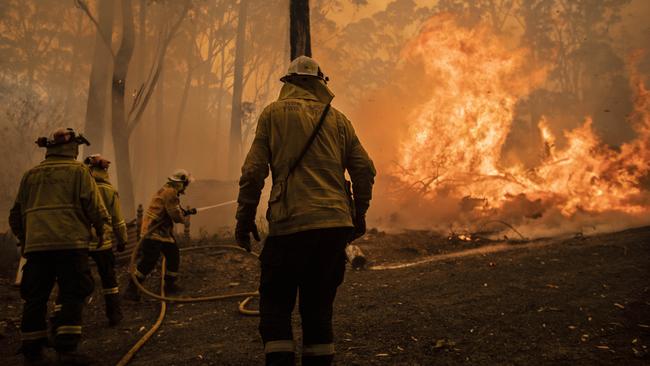
We were perfect strangers walking into a forest to make sense of a thing called fire. A handful of Australians driving down the east coast of a burnt country. Not just a sunburnt country through that long black summer. A fireburnt country. Ash-buried and flame-scorched, but still every bit as easy to love. We had all parked our cars at a gravel truck stop clearing on the side of the Kings Highway where it cut through blackened Currowan State Forest, on the south coast of NSW. A young family of four. An old man and his dog. Three fit young blokes on a weekend away. Two women from the Australian Native Plants Society. A writer and a photographer. Wide-eyed pilgrims in an alien landscape, craned necks and dropped jaws, walking through a black forest of burnt matchstick eucalypts, some wicked vision of desolation from a soldier’s charcoal sketch of the Somme.
But something was being born in the black. Newborn fern miracles popping from wood poles as dark as night, drawing us all deeper into the forest. A magic show, months in the making, causing cars to brake abruptly along the highway just to catch a glimpse of a natural forest voodoo that reduced all our privileged city worries to wind. New bills. New debts. New deadlines. It all felt so insignificant in the face of new growth. New life.
It was the beautiful green returning, as mesmerising as flame, maybe more so. A green so deep and rich and true that it made roadside children, some adults too, giggle at the sight of it. No name for this particular colour can be found on a paint shop colour chart. This colour had time and evolution in it. This colour had emotion in it. Promise Green. Hope Green.

Resilience Green. It was light from the dark. Green from black. Life from death. Something so meaningful and eternal about it all. Something relieving and joyous in it. Something poetic. The awful realities of the bushfire facts and figures we’d all endured over that long summer now suddenly meeting, with the arrival of a thousand young emerald forest ferns, the lyrical dreamer poet world of William Shakespeare. Around 36 million hectares of native Australian bushland burnt in the Black Summer bushfires, and “how hard it is to hide the sparks of nature”. Thirty-four lives lost, over 3000 homes destroyed, almost three billion animals killed or displaced – “one touch of nature makes the whole world kin”.
There are fires and there are lights in this country that bring us all together and make us kin. There are fires and lights that never go out, and you better believe that I refer to the ones that burn bright inside us all.
I will remember Wazza Shaw’s light.
“The whole horizon was lit up,” Wazza told me in the last week of that endless summer, standing on the rickety wooden deck of his miraculously still-standing home in the town of Mogo in the Eurobodalla Shire. “It sounded like a freight train,” Wazza said. “Woomp. Woomp. Woomp. This thing didn’t stop. Louder and louder and louder until that train pulled into the station.”
I’d gone south to see the damage the fires had done. I knocked on Wazza’s door with a single question: “What the hell did you just live through?”
“The apocalypse,” Wazza said. A father of two. Mullet haircut. Heart the colour and size of Uluru. Wazza got his family to safety, then returned to his Mogo street where he fought a raging kilometre-long firefront with a makeshift firehose that he ran from a generator fixed to the back tray of his ute. After he saved his house he put his life in profound danger to save the homes of his neighbours. Terrifyingly and unmistakably alone, he drove up and down his abandoned street wetting down homes as the fire lashed and spat, eventually surrounding him with zero exit points. Plan A: wet the houses down until the fire swept out of Mogo. Plan B: open the iron grate in the gutter on the street and slide into the stormwater drain and pray that a bloke don’t suffocate. “Thank f..k I never had to go to plan B,” he said. His brain told him he was dead. His busy head was certain of it. But his heart told him something else. His heart said there was hope. And that was the theme of that endless summer. All that light from the dark. All that life from death.
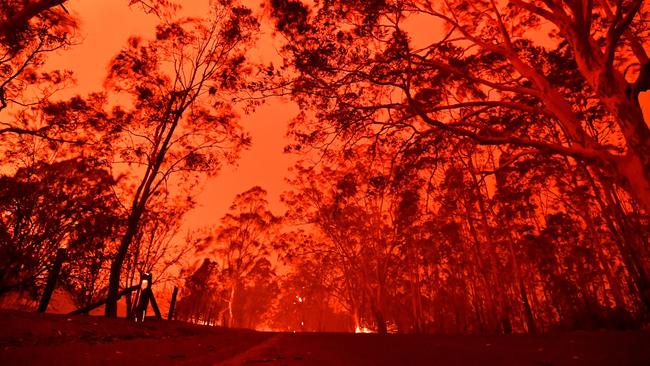
Our shimmering east coast was turning to ash. As far back as late October 2019, a bolt of lightning over dense and dry Wollemi National Park, NSW, had sparked a fire that spawned a monster, the Gospers Mountain “mega fire” that swept across the Blue Mountains and the Hawkesbury and refused to die until February 2020. Forest fires erupted across the country. The north and south coasts of NSW. The Riverina. The Snowy Mountains. Firefighters rushing into infernos across Queensland and Western Australia and South Australia. The fertile paradise of Kangaroo Island suffocating in smoke and ash. In Victoria, glorious East Gippsland was aflame. The Victorian border holiday town of Mallacoota was cut off and some 4000 evacuated and stranded residents and tourists stood under that crimson and terrifying sky as fire swept through the town and Australian Navy vessels began rescuing evacuees. Apocalyptic images from that desperate evacuation spread across the world and suddenly the heartbreaking Australian bushfire crisis of summer 2019-20 was being talked about at water coolers from New York to London to Brazil.

Homes buried in black dust. Livelihoods stolen by flame. All that was left standing were brick chimneys and the toasted metal frames of backyard trampolines. The smell of animal death everywhere. You want to know what it smells like? Like a suburban fireplace filled with five rotting pigs being eaten by maggots. You want to know what it sounds like? The crackle of a thousand raging bonfires meeting the force of a cyclone, all arriving unannounced in the night-time at the gate of a family farm 150 years old. The eucalypts don’t just burn, they explode, and it sounds like drug-crazed lunatics are firing shotguns around your property. The horizon glows devil-red in the night and the relentless woomp, woomp, woomp of inevitability screams a message so loud and so clear that now, now, now is the time to run and now might actually be too late. And here’s what it feels like. Your late grandmother’s piano burnt to ash. Your family photo albums turned to dust. Your 12-year-old sheep dog getting confused and trapped inside a burning forest.
Your dad never coming home again.
The people who lived through it called it things like “the beast” and “that evil bastard” and “the monster”. They spoke about the fire as though it had guile, as though it had a nasty streak, some twisted dark heart inside it that caused it to do the things it did. All those cruel little finishing touches, all those devastating master strokes. Attacking the one house in the street that didn’t have home insurance. Attacking the house of the widow who lost her husband five weeks ago. Burning all the family photos in the living room but leaving the kitchen in-tray with the unpaid bills perfectly intact.
But still all that light in the dark. Still all them swordless heroes.
What happens when life gets so rough that the very act of waking up, hopping out of bed, walking out your front door feels like an act of heroism?
I will remember the stunned faces of two Bega Valley locals, Rodney Yalg and Tracey Campbell, as they looked upon a field of scorched earth and rubble that once was their thriving neighbourhood. The fire had changed them. The morphing fire villain had made them morph with it. Tracey had survivor’s guilt. She saw on the news all those grieving families and she wondered why she was spared. She started phoning old friends. She thought maybe she was still in shock. “I just started apologising to people for anything I’d done when I was younger,” she said, weeping. “I got in contact with family I hadn’t spoken to for a while and I apologised for my bad deeds. I evaluated everything. That’s what that fire did to me.”
Here’s a rare kind of shame one anonymous man must live with for the rest of his life. His home was surrounded by forest and he vowed to stay and fight the fire and his teenaged sons vowed to stay and fight the fire with him and the part of being a father that takes pride in the bravery of his sons, in those wild fire hours, temporarily overwhelmed the part of being a father that told him he must protect his sons at all costs, even if those costs included the home of his dreams. They fought that fire together but there was a moment under that black daytime sky when the father realised the fire had wedged him and his beloved sons in past the point of no return. The point of no escape. And the father felt shame in that moment before he felt fear. Were that fire to break their feeble hose-wetted border around their house and were that fire to swallow his boys up with the wood and metal and glass house of his dreams then he knew the last horrid thought he would have before he died was that he was responsible for the death of his sons, his very reason for being.
The monster grew bigger and the monster grew smarter. It got inside the minds of the locals like it got inside their hallways. The monster exposed everything. It exposed the flaws in best laid plans, in old ways of thinking. It exposed the flaws in pride and material possessions. The monster had fires for fingernails and they dug down deep inside their crowded heads and their broken hearts and the monster exposed their fears like it exposed their bedrooms, left them gutted and covered in ash under the summer sun and the summer rain that always came too late.
I will remember Jamie Robinson’s light. He was 25 years old in 1996 when he received a bravery medal for saving an 18-month-old girl from a house fire in the Canberra suburb of Holt. He was 33 in the summer of 2003 when Canberra bushfires burnt his home and all his possessions to the ground. He was 50 when his Bega Valley home was turned to ash by the Black Summer firefront.
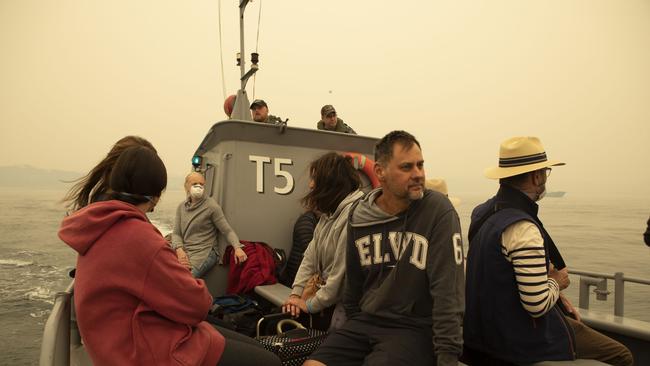
He found himself alone, days later, on his devastated property, but for his loyal half-kelpie, half-Australian shepherd dog, Omi, surrounded by the charred wood and tin that was once his home. He was thinking about good and bad luck, fiddling with an old rope he’d found on the ground. He was thinking about that 18-month-old girl he’d saved all those years ago and why that act of pure heroism hadn’t granted him a grace period with the universe, a reprieve from that fickle monster named Mother Nature. When he was done with all that thinking he looked down at something he was absent-mindedly tying together with his shaking hands. It was a noose. “It’s like, f..k it,” Jamie told me. “There is no point. I just wanted to exit the planet. And then my beautiful girl here, Omi, she comes up, looks at me, and with her paws she kind of slaps my hands that are doing the tying and she just stares at me and I swear she does this big intentional blink like, ‘Don’t be a f..khead, Dad. Who’s gonna look after me?’ ”
Jamie put the rope down and made his way into nearby Cobargo where he walked into the town’s bushfire relief centre. He didn’t tell anyone his story. He didn’t ask for any favours. “My name’s Jamie,” he said to one of the centre’s co-ordinators. “I’m here to help.”
One touch of nature makes the whole world kin.
The combined hands and united voices of firefighters and first responders and selfless volunteers from more than a hundred bushfire-affected local government areas across the country, all turning up and turning up and turning up again with the same eternal message: “I’m here to help.”
I will remember the countless volunteers working seven-day shifts at crowded community emergency-relief centres. People unpacking donated charity boxes filled with warm clothes and nappies and tinned food. People erecting makeshift toilets and showers for residents of towns where dams were contaminated by ash.
I will remember Chris Walters and the way she operated the phones in a shed in the middle of the Cobargo showgrounds, working six days a week as co-coordinator of the Cobargo Bushfire Relief Centre. Her office was next door to a shed where newly homeless Cobargo locals were living on the showground fields in emergency caravan accommodation and filling shopping bags with donated supplies: canned goods, breakfast cereals, soaps, clothing, sleeping bags, medical supplies, baby food, pet food. There was a tool bank for people whose tools had burnt in the fire.
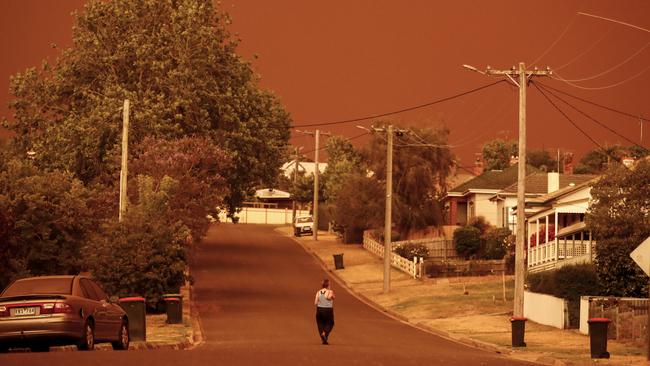
“I’d like to think we’re in recovery mode, but recovery is the wrong word,” Chris said. “Recovery indicates you’re gonna go back to where you were before. We never will. This is a new life coming on. Some people are still really, really stuck in their grief. We’re still getting people coming in, seven weeks later, who have never been in before. It’s the first time they’ve been ready and able to come into town and ask for help. They just haven’t been able to do it.”
I will remember the light of more than 100 ultra-specific government-funded recovery projects that were ignited in the months following that awful summer. A four-megalitre concrete potable water supply reservoir being constructed in Queensland’s Livingstone Shire. Groundbreaking and sustainable water security infrastructure being built on Kangaroo Island. Community halls, flattened by fire, being rebuilt across NSW. In fire-ravaged East Gippsland, ember proofing, electrical upgrades, satellite comms and Wi-Fi upgrades taking place in community halls across the region. Wairewa Hall. Genoa Public Hall. Clifton Creek Community Public Hall. Ensay Memorial Hall. On and on it goes. People turning up and turning up and turning up.
All that light from the dark.
I will remember the light of the lost. I will remember the light of the 10 firefighters who lost their lives. I will remember the light of Renee Salway. Just the way she got out of bed each day, the way she kept going. I remember driving past the Cobargo property where her husband, dairy farmer Patrick Salway, 29, and his father Robert, 63, died trying to save the family home. Renee was the very definition of grace the following day: light from the dark. She got out of bed and she turned her thoughts to the southern sky because I guess she thought it was listening. “I love you now, I love you still,” she said. “I will see you again, Patrick, my best friend. Hope you are up there fixing things in the stars tonight.”
How hard it is to hide the sparks of human nature.
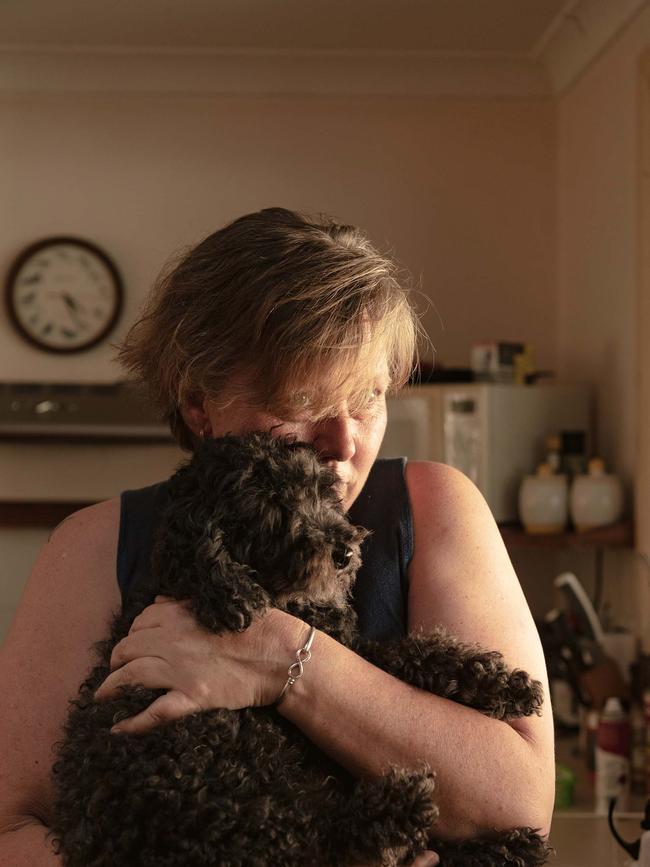
The book you hold in your hands is an exhaustive and emotional visual reflection on a truly extraordinary moment in Australian history. It is a remembering of the things we lost – the homes, the land, the animals, the lives – and it is a remembering of the things we will always have: community connection, human compassion, a fighting spirit as intrinsic to our culture and country as fire and flood. It’s a visual story of recovery, resilience and regeneration in the face of an unprecedented natural disaster.
It’s the story of our land and it’s the story of us. It’s the story of what has been and what it is still to come.
The book you hold in your hands is as much a meditation on the Black Summer fires of 2019 and 2020 as it is a permanent reminder of an inextinguishable fire that exists in the community-owned-and-operated spiritual heart of our nation.
I see this particular fire as a pilot light, of sorts. It’s not a bushfire-type flame. It’s softer than that, more fragile. This shared pilot light of ours can be weakened but it cannot be extinguished. It’s a fire that is fuelled by community and kindness and compassion and recovery and resilience and it’s a flame that was burning long before that endless Black Summer. This is the light that never goes out. This is the fire that never goes out. Long may it bring us together. Long may it light us up in the dark. Long may it burn.
Fighting Spirit: A tribute to the bushfire-affected communities of Australia’s Black Summer is a collaboration between News Corp Australia, HarperCollins and the federal government’s National Resilience and Recovery Agency. Five thousand copies will be donated to libraries and schools in bushfire-affected communities and all royalties will go to the bushfire charity BlazeAid.




To join the conversation, please log in. Don't have an account? Register
Join the conversation, you are commenting as Logout